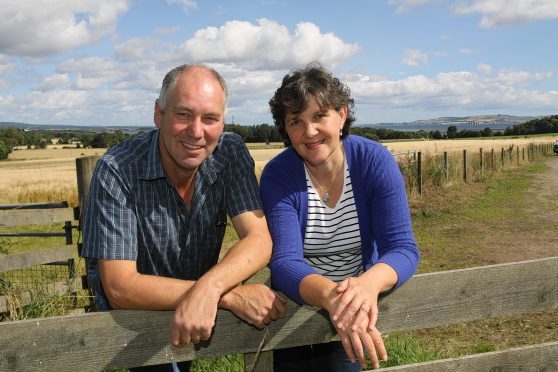The importance of soil micronutrients when growing spring barley was emphasised at a recent Monitor Farm meeting in the Black Isle.
The region’s monitor farm is hosted at Ballicherry Farm, Balblair, which is run by Brian and Caroline Matheson.
While macronutrients such as nitrogen, potassium and phosphate are rightly regularly assessed, farmers were told of the need to look at their soil in more depth to boost health and productivity of the crop.
Gavin Dick, AHDB Cereals and Oilseeds knowledge exchange manager for Scotland, said: “We have tested for macronutrients for years but with input costs increasing, and the value of the product far higher nowadays we really need to have a detailed understanding of the nutrient balance in ours soils to boost crop growth.”
Soil nutrition expert Fraser Rennie, of Agrii, said the key was understanding what nutrients spring barley needed and when.
He said: “Nutrition is more important with spring cropping as the plant grows so quickly; it is like a sprint to the finish and to achieve good growth the crop needs access to a host of nutrients.
“Micronutrients like copper, zinc, manganese and boron are no less important than the macronutrients, they are just required in smaller quantities.”
GPS mapping and soil analysis help, but for an in-depth picture soils need a broad spectrum analysis followed by tissue sampling. The first will give a complete picture of the nutrient levels across the soils, while the tissue sampling will show which are making it into the plant.
Mr Rennie said: “Tissue sampling is particularly good value for money as farmers get a really helpful data set which tells them what the plant is lacking and what it needs.
“For example, sometimes up here you might find that while there is plenty of phosphate in the soil, the plant isn’t able to access it. This emphasises the importance of liming, as phosphate availability drops off significantly at a pH less than 6.”
He shared tissue test results for the area which showed that as well as low levels of phosphate the crop was lacking in the micronutrient boron.
However, as it can be added using a foliar spray later in the season if a deficiency is picked up it can be easily remedied.
As the Black Isle soils tend to have high phosphate levels which can inhibit trace elements zinc and copper, there could be a benefit to adding foliar applications of these micronutrients also. Mr Dick said this attention to detail was key to improving crop yield across the sector.
